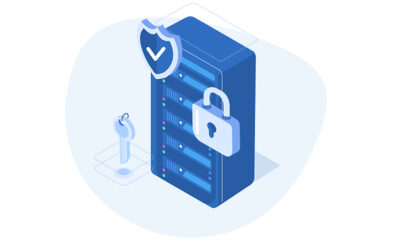Acquiring sponsorship is the supreme discipline in the event, congress and trade show business. The potential is huge, but how do you tackle it?
Event managers can tell you a thing or two about it: Your trade show, congress or event has a great audience, superb location, pristine program, spectacular keynotes – there should be some money to be made from sponsorship income, right?
It’s only after a few phone calls that you realize how challenging it is for every sales team to acquire sponsors.
Take a trade show, for example. A lot of sales staff are well trained and efficient when it comes to selling booth space. They see their limits, though, where non-space-offers like advertising or sponsorships are concerned.
However, in times of decreasing income from stand rental, it is crucial for organizers to develop new income sources.
Why is selling sponsorship so hard for event planners to do?
There are a couple of reasons for this:
- Selling sponsorship is a highly individual game. There is no one-size-fits-all. Every potential sponsor will have their own needs and preferences and requires individual solutions.
- Event and trade show managers, on the other hand, love to work by standards. Otherwise, it would be difficult to efficiently market and organize large events.
- While it is common practice in companies to organize an exhibition stand, the mechanics of sponsorship are quite different. At the end of the day, it is very time-consuming for a company to execute a sponsorship engagement with high publicity impact.
- Sponsorships and advertising offers are typically in need of explanation. While most companies will know how to evaluate a stand position at a show in terms of visitor flow, frequency and the surrounding companies, this is not so easy with advertising offers and sponsorships. Your sales team will have to do a lot of explanation work.
What can you get sponsorships for?
Basically, there is almost no service or platform at a trade show or event that wouldn’t be appropriate for sponsorship sales. The scope ranges from branded event apps to hostess dresses, catering or visitor services like mobile phone charging stations or wifi connectivity.
So how can you and your sales team manage to get potential sponsors and advertising customers excited about your event and your offerings and thereby generate more income?
These are our 7 tips!
1. Find out as much as possible about your potential sponsoring partner beforehand
Obviously, that also applies to selling stands at trade shows, but even more so to sponsorships. What are the activities of the company? Are there new products or topics? Is there a current peg to hang your sales pitch on?
Besides the website, social media channels are ideal sources of information. You’ll not only find the current topics the company cares about, but even the right contact persons for sponsorships by searching Linkedin, Xing, Facebook or Twitter.
More often than not, you’ll find those contact persons in corporate communications or at management level, not so often in sales.
2. What counts is the individual approach
The reasons for a company to invest in sponsorships often lie in differentiating from their competitors. Take that into account when formulating your sponsorship offers.
Your offer should always bear the logo of your potential sponsor and be tailored to their company. Potential sponsors detest standard offers, simply because they want to stand out from the crowd.
3. You sell sponsorships emotionally
While a trade show stand is the basis for a company to present itself at a show, sponsorship can be the icing on the cake. The focus lies on image aspects of sponsorships. It is tied with an emotional value (goodwill), so this is how you should address a potential sponsor.
This applies to the graphic design of the sponsorship manual (check out how SXSW does that) as well as to personal contact and to arguing benefits.

Benchmark: Sponsorship deck of SXSW
4. Be flexible
Selling sponsorships is like in real life: It is good to have a plan – it is even better to knock it on the head sometimes! Very rarely, big 5 to 6-digit sponsorship deals will materialize exactly how they were laid out in the sponsorship deck in the first place.
Every company will have their individual wishes. Be prepared to offer flexible components and pricing.
5. Think out-of-the-box
It is really exciting for a sponsor to have their logo on your brochure (boooring…)!
Honestly: Creative sponsorships have a certain wow-factor. They offer added value to the attendees and make the event more attractive. Sponsorships can definitely be provided by payments in kind – when they take pressure off of the event planner’s budget.
A current example: The Rio Olympics will take place in a recession period in Brazil. The national organizing committee have made the best of it and have acquired more than 60% of the sponsorship income by payments in kind.
You’ll find great sources of inspiration by looking at sponsorship decks of events like SXSW, CES in Vegas, the TED conferences or by following the sponsorship blog by Kim Skildum-Reid.
Converve’s matchmaking services are tools to add value to exhibitors and participants. An exhibitor can use the service to generate leads and make their trade show participation more efficient.
How about getting a company from outside the car industry to sponsor the networking platform of an automotive show? Let’s say from the insurance sector? The sponsor will get a lot of goodwill, while the organizer will raise their income!
6. The personal touch
Quite often, the decision for a sponsorship engagement relies on getting a particular person excited about your project. Even when it is a group of decision makers: Try to convince at least one person to take on the role of the internal ambassador for your project.
Offer that person the chance to position themselves and to shine. Quite a number of sponsorship engagements (e.g. in sports or culture) are driven by internal promoters that fell in love with a project.
7. Pampering is part of the game – even after the event!
Let’s get back to measuring results. You can measure the success of your trade show stand – among other factors – by counting the generated leads. To some extent, this can be seen objectively.
It is not so easy with sponsorships. The effect on brand image is hard to track. Still, your contacts will need to justify the money spent on your sponsorship internally. Assist them by providing comprehensive and visually appealing documentation. Bear that in mind when briefing your photographers or video staff at your event.
In a nutshell
Selling sponsorships is highly individual. Prepare your sales staff by providing training.
You will develop new sources of income when focussing on the needs of potential sponsors before, during and after the event.
Would you like to know how to offer Converve’s networking platform as a sponsorship item? Let’s talk, we have some ideas for you…!



